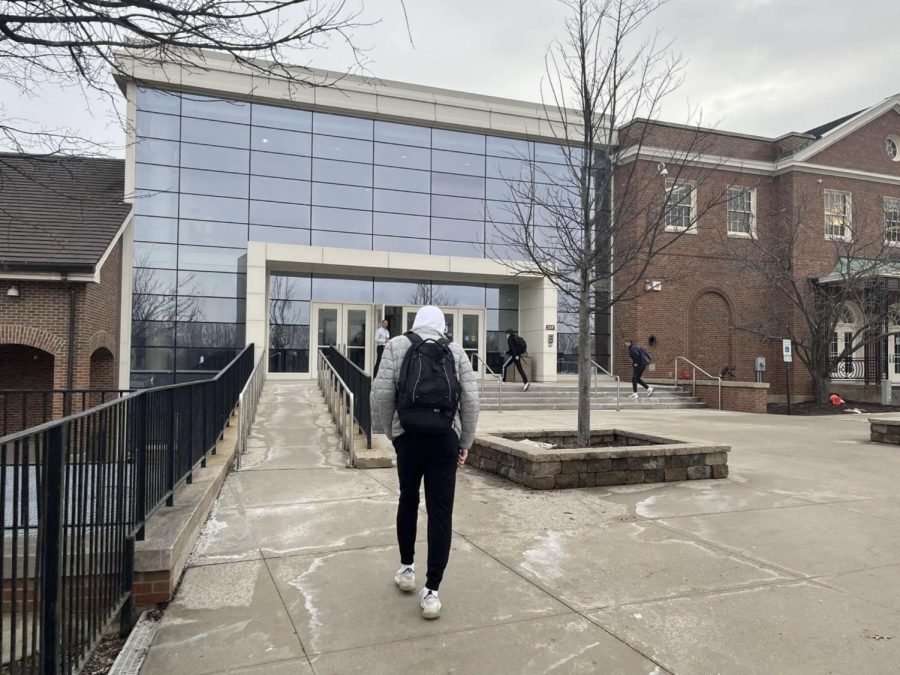The Worst Time of the Year?
The cold Chicago winters and the effects of seasonal depression take a toll on students
March 2, 2022
Amidst the beginning of second semester, seasonal depression and the winter blues take effect for many students. The horrible Illinois weather, lack of interesting holidays and events, and the feeling of living the same repetitive day time and time again can lead to a more than boring daily schedule.
Seasonal depression, which is professionally known as Seasonal affective Disorder (SAD), is defined as “a type of depression that’s related to changes in seasons.” For most people, it starts during winter and eases away as spring approaches.
Out of the six percent of the US population affected by SAD, a large portion live in northern climates. Another 14 percent of the US adult population suffers from a less severe form of mood changes, often referred to as the “winter blues.”
“Counselors and social workers do see an increase in the number of students who struggle with their mental health during the winter months,” LFHS Guidance Counselor Dan Panfil said. “Especially during January and February when the weather is cold, the amount of daylight is at a minimum, and the majority of students’ time is spent indoors.”
During winter, students tend to reach out for help more than spring and summer, Panfil said.
“Mental health struggles are not limited to the winter months, but overall, we tend to see an uptick in students seeking help during the winter months,” Panfil said.
Seemingly, the Northshore provides ideal conditions for SAD symptoms to appear. A typical drive to school consists of a view of brown slush pushed to the curb and overcast skies. From there, the day begins: eight hours at a desk, repeating the same schedule that began in August. Not to mention, the lingering head cold that seems to last all winter.
SAD is also highly correlated with the lack of light during the winter months. The days get shorter, leading to less sunlight and vitamin D exposure—both of which can contribute to seasonal depression.
Common SAD symptoms include low energy, feeling sad or down most days, overeating, losing interest in activities.
“Going outside to the really cold and gray days just makes me feel down, and seeing the sun less and less is just a feeling I hate,” junior Vivi Hirschfield said, who was diagnosed with SAD at 14. “When it gets warm, I feel like a different person… I feel lighter and carefree.”
The difficult aspect of seasonal depression is that it’s hard to overcome without a switch in weather, which is out of our control.
As for the “winter blues,” they are not considered a mental health disorder, but still affect people’s mood, often making them sad or feel down.
If you’re struggling with what you may believe to be SAD, it’s important to not dismiss it as the “winter blues.”. Especially when living in an area where people are more susceptible to getting it, it’s not something to push off. Seasonal depression is very real and should be addressed if experiencing symptoms. It can be treated with a variety of therapies.
Personally, the winter blues have looked like struggling to get out of bed in the morning when my room is bitterly cold and there’s not even the smallest ray of sunshine peeking through my window. It’s hard for me to get the day started when I look outside and see nothing but a gloomy view.
Then comes the walk to school.
The anticipation of having to walk to the building looking at overcast skies, praying I don’t slip on ice, and trying to survive the cold leaves me sitting in my car for at least ten minutes. That wait is a probable cause for the increase in first period tardies we received an email from the deans about in November.
So, when asked: Is this the worst time of the year? I would say yes.
In the meantime, if you hate winter as much as I do, there’s little things you can add to your schedule to ease some of the negative seasonal feelings.
The winter blues can leave me feeling unmotivated, so it’s helpful to do something that makes me feel productive. For example, going to the gym helps me be out of the house and stay physically active even when I can’t run outside like I do in the summer.
Additionally, despite the sometimes brutal 20 degree weather, go outside! Embrace the cold and go sledding or ice skating, or even just a walk. The natural light and fresh air will affect your mood even if you dread the cold.
The good news is Spring Break is in three weeks and summer is in just about four months! Even if you’re staying home for break, the change in schedule and extra sleep is a beneficial reset before the end of school. After that, it won’t take long for the trees to bloom, the temperature to increase, and the sun to brighten with our spirits.







